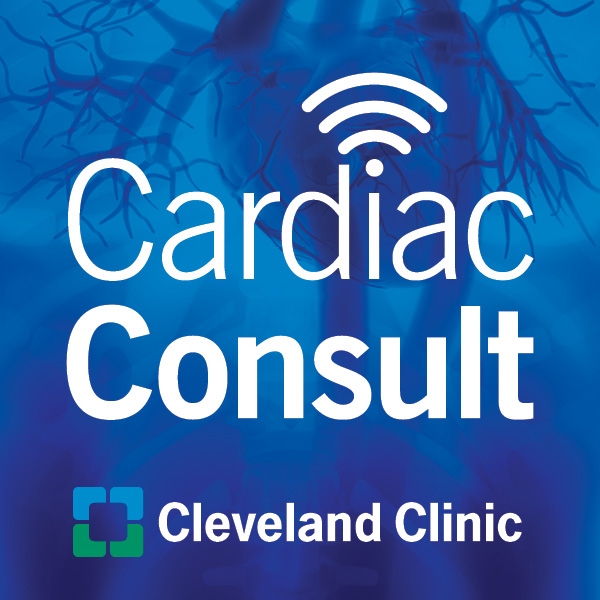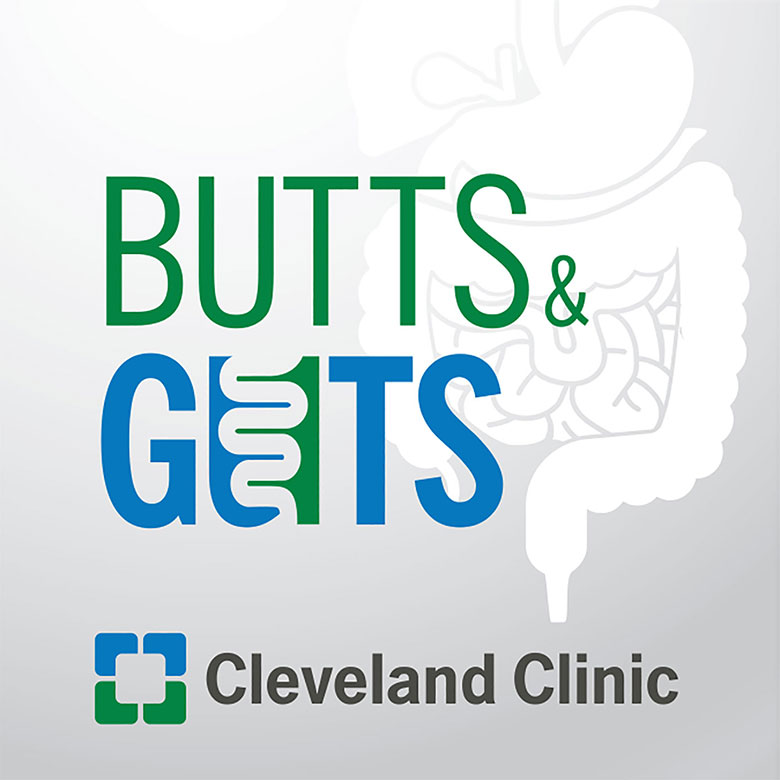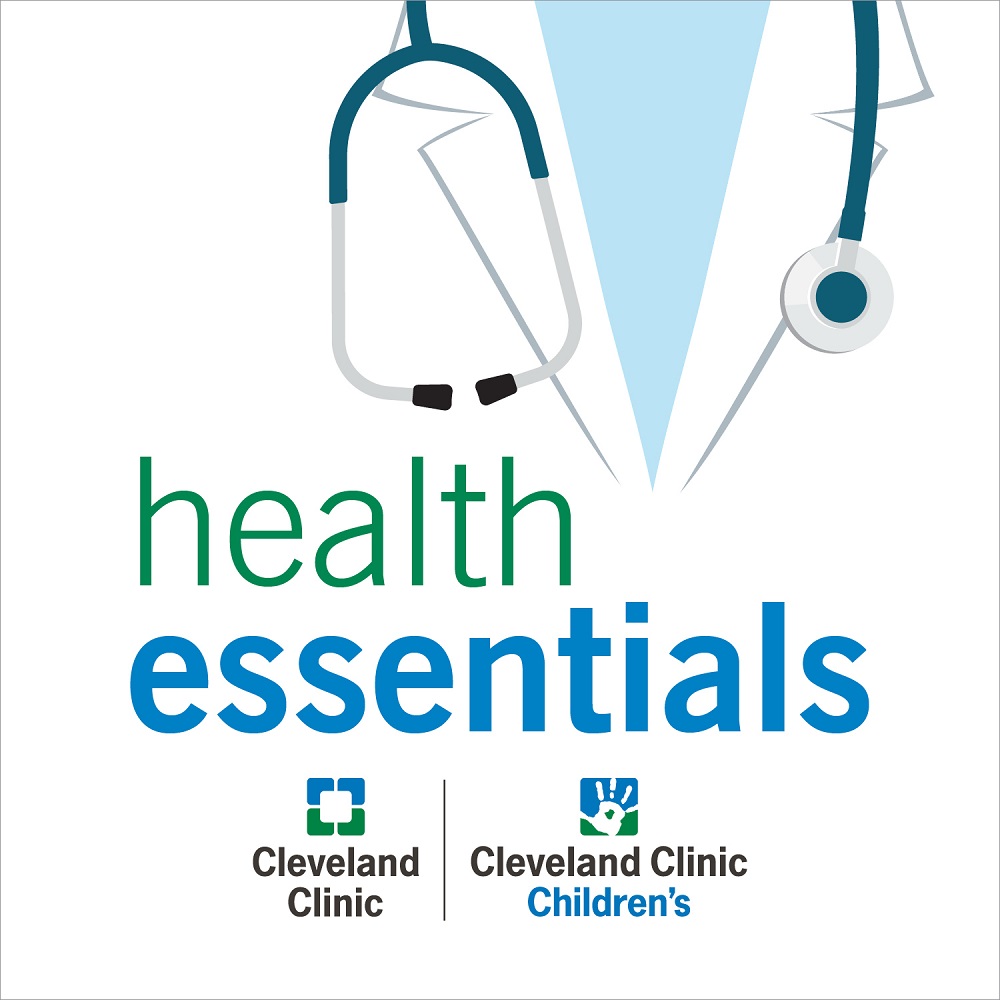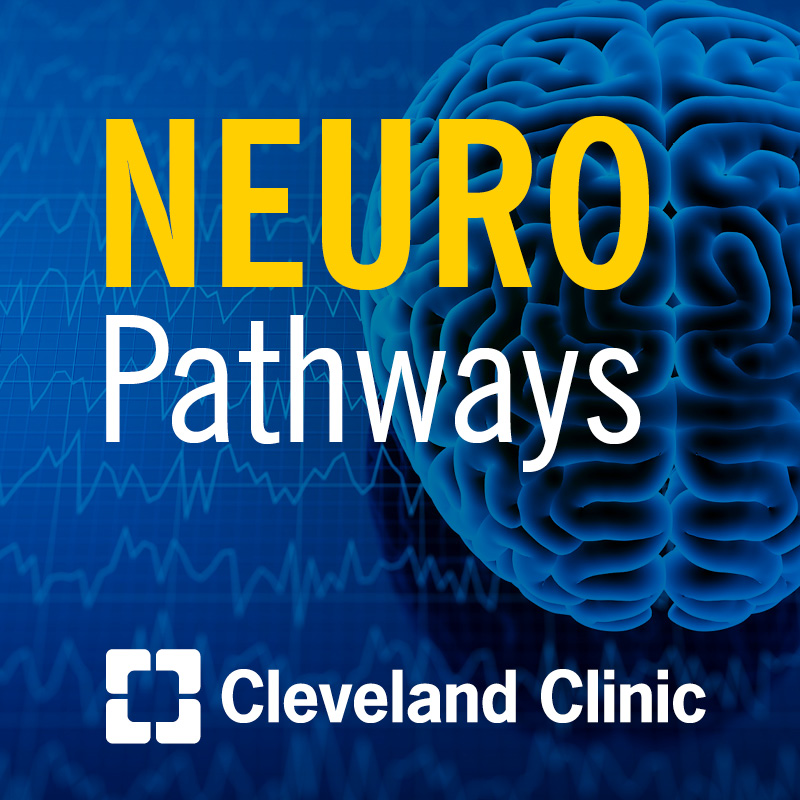Advances in the Management of Tricuspid Valve Regurgitation

Over the last decade, the tricuspid valve has transformed from being the “forgotten valve” to gaining clinical attention as the one of the next frontiers in structural heart disease. The evolving landscape of structural interventions and multimodality imaging have led to advances in the assessment and management of TR. Dr. Tom Wang discusses considerations for the evaluation and management of TR.
Read more about Dr. Tom Kai Ming Wang, MBChB, MD.
Cleveland Clinic’s Mitral and Tricuspid Valve Center provides an in depth evaluation of both mitral and tricuspid valve problems and our experts will work with you to decide whether medical management and monitoring or a surgical or interventional procedure is indicated and when is the best time for this to be performed.
Subscribe: Apple Podcasts | Podcast Addict | Buzzsprout | Spotify
Advances in the Management of Tricuspid Valve Regurgitation
Podcast Transcript
Announcer:
Welcome to Cleveland Clinic Cardiac Consult, brought to you by the Sydell and Arnold Miller Family Heart, Vascular, and Thoracic Institute at Cleveland Clinic.
Tom Kai Ming Wang, MBChB, MD:
Hi everyone. My name is Dr. Tom Wang. I'm a staff cardiologist here at the Cleveland Clinic under the Section of Cardiovascular Imaging and Department of Cardiovascular Medicine. And today I'm going to be discussing with you an interesting topic, a passion of mine, especially from the research perspective, on tricuspid regurgitation. So as we know tricuspid regurgitation, there is a lot of recent interest in this area for a variety of reasons. It was the forgotten valve in the past, but now we are noticing an increased prevalence of this condition, advances in multimodality imaging, as well as poor prognosis, and also controversies in the mismanagement. Therefore, today I'm going to be discussing all of these topics.
Tom Kai Ming Wang, MBChB, MD:
So firstly, what causes tricuspid regurgitation? And this is at a very important area because the etiology or the cause of tricuspid regurgitation influences its prognosis and management. So in a recent study that we published here from the Cleveland Clinic of over 9,000 patients with significant tricuspid regurgitation, we found that over 95% of patients have secondary tricuspid regurgitation, which means the valve itself is not diseased, but there is significant either right atrial or right ventricular dilatation dysfunction that leads to the tricuspid regurgitation. The most common of which is from left heart disease, so there are things like left heart valve disease, cardiomyopathies, as well as coronary disease, followed by atrial functional tricuspid regurgitation and then chronic lung disease.
Tom Kai Ming Wang, MBChB, MD:
In terms of primary tricuspid regurgitation, which only makes up about 5% of these patients, the most common cause was endocarditis followed by things like degenerative prolapse, prosthetic valve dysfunction, and implantable device leak. Each of these causes are important as part of patient's assessment because they're potentially risk factors and they might alarm you to think about these causes. So for example, if they have previous left-sided heart surgery, they have a device lead, they have atrial fibrillation, chronic lung disease makes you really want to look hard for tricuspid regurgitation.
Tom Kai Ming Wang, MBChB, MD:
So the next question is how do we evaluate these patients? So often patients are asymptomatic, so this is why it's not always easy to catch tricuspid regurgitation, especially in the early phases when you do want to so that you can monitor intensely and aggressively treat these patients. But if they do present with symptoms, you want to ask for if they have any fatigue, shortness of breath, swelling in their legs or in their abdomens, including ascites, as well as bloating and other signs or symptoms of their risk factors we've mentioned before. Following that, you want to do your standard assessment including lab markers like NT-proBNP for heart failure, and also lab markers for kidney and liver dysfunction because these blood tests are all known to be associated with worse outcomes in tricuspid regurgitation. So things like creatinine, liver enzymes, INI and albumin, as well as hemoglobin and platelets. Following that, you want to quickly do an ECG of course to check for abnormal rhythms. And then you're moving on to your imaging modalities, which we'll talk about next, and then maybe even consider right heart catheterization.
Tom Kai Ming Wang, MBChB, MD:
So next part I'm going to talk about the imaging evaluation of tricuspid regurgitation. So of course the first line imaging modality for all valve disease is transthoracic echocardiography. And this is the most widely used. And when you want to assess a patient with tricuspid regurgitation, you want to think about three different aspects. The first of which is the tricuspid valve anatomy and the cause for the tricuspid regurgitation. The second part is grading the severity of tricuspid regurgitation. And the third part is to look at the associated structures of tricuspid regurgitation, particularly the right ventricle, right atrium, and pulmonary hypertension.
Tom Kai Ming Wang, MBChB, MD:
So when you first think about the valve anatomy, traditionally it's considered as a three leaflet valve and hence its name tricuspid valve. But actually recent transesophageal echo studies show that only about half of patients have three leaflets and everyone else have somewhere between two to five leaflets. And in fact, there's a new nomenclature for this. But the type 3B or the one with two posterior leaflets is actually present in about a third of patients. You also want to think about the associated structures to the valve apparatus. So there's three papillary muscles each connected to two leaflets, in general, and also the annulus, which is a 3D saddle shape structure but as it becomes more dilated can become more planar and circular.
Tom Kai Ming Wang, MBChB, MD:
The other associated structures with the tricuspid valve, you have to think about particularly for procedures, include the right coronary artery, which runs on the outside lateral to the later annulus of the tricuspid valve, the AV node, which of course if you injure that can cause heart block, that sits next to the septal leaflet of the tricuspid valve, and also the coronary sinus, which sits between the septal and posterior leaflet of the tricuspid valve. And there's various techniques we've done using CT, MRI or even 3D printing reconstructions to better evaluate the tricuspid valve leaflets as well as of course TEE for structural guidance.
Tom Kai Ming Wang, MBChB, MD:
So moving on to grading the severity of the tricuspid regurgitation. Firstly, this is of course important because increasing severity of tricuspid regurgitation is associated with worse prognosis and survival. So we of course start with the multi parametric criteria derived from the American Society of Echocardiography guidelines. So we look at a range of parameters, qualitative, semi-quantitative and quantitative parameters. And I won't go into each of these in detail, but things to look for qualitatively are what's causing the tricuspid regurgitation. So whether it looks like there's some leaflet damage, whether it's perforation, flail, vegetation, whether the valve lead is impinging on the valve. Then you look at color Doppler parameters. So how much color there is from the tricuspid regurgitation, whether the continuous wave Doppler jet is dense or triangular. And then afterwards, if they have at least moderate tricuspid regurgitation, you really want to do many of the quantitative assessments. So these include the vena contracta, the effective regurgitant orifice area using the PISA technique as well as regurgitant volume using either the EROA technique or the volumetric techniques. And these, when you have multiple parameters in the severe range, obviously you're severe. If it's multiple parameters in the mild range, it's mild, and if it's somewhere in between, then you look at these parameters to determine if it's moderate. The next step from this is if you're still uncertain about the severity based on echo alone, because transthoracic echo, the views might be suboptimal, there's discrepancy between parameters or of clinical findings. Then you look into the other emerging modalities such as transesophageal echo and MRI.
Tom Kai Ming Wang, MBChB, MD:
So before moving onto those modalities, I'm going to briefly mention the associated structures I talked about. So it's very important to assess the right ventricle size and function. And you, again, when you have at least moderate tricuspid regurgitation, you want to do as much of the quantitative assessment as possible. So these are things like on echo you can assess the right ventricle basal, longitudinal, and midward diameters, areas, and volumes. And then for right ventral function, at minimum, you should do the TAPSE and RVS prime, but also consider fractional error change, RV strain, which is a very strong prognostic factor, as well as 3D ejection fraction, if possible. And you should assess the right atrial volume index as well as the right ventricular systolic pressure, which is from both the TR jet and the IVC to assess the RA size.
Tom Kai Ming Wang, MBChB, MD:
So transesophageal echo, as we move on to that, has specific roles for tricuspid regurgitation to assess the etiology, to better visualize the tricuspid regurgitation jet, as well as quantification, and also for procedure guidance. So whether you're thinking about surgical or transcatheter procedures, you need to do a TEE to see whether it's feasible or not, particularly for transcatheter procedures. And then intraoperatively can help guide the procedure itself to see where is the actual pathology that you need to bring the tricuspid leaflets together and also assess before and after you put in a device what the gradients are, how much residual tricuspid regurgitation you have, and whether you've caused any complications.
Tom Kai Ming Wang, MBChB, MD:
So if we move on to cardiac MRIs. So cardiac MRIs has been, the use has been growing in the last few years in terms of in tricuspid regurgitation because we know that often transthoracic echocardiography may not be sufficient for quantification. So cardiac MRI has two main roles. The first is that it's the reference standard for right heart quantification. So you can use it to assist the right ventricle size and function using standard cine imaging techniques and using the short axis stack for tracings as well as using automated software for assisting that. And then secondly, to quantify the degree of regurgitant volume infractions. So the tricuspid regurgitation volume is calculated using the indirect method by the right ventricle stroke volume minus the pulmonary artery forward flows, and there's many other techniques you can use for that, including 4D flow. And then of course, the regurgitant fraction is the regurgitant volume divided by the stroke volume, and that gives you a very nice quantification.
Tom Kai Ming Wang, MBChB, MD:
Now, it's important to remember that when you quantify regurgitation by MRI that often it is on average about 10 to 15 mLs of regurgitation volume less than echo. So the threshold for severe TR by MRI should be lower than echo. And we did a study on this published in Circ Imaging last year where we found that the optimal severe threshold by MRI should be 35 mLs for regurgitant volume and 30% for regression infraction, and it's independently associated with worse outcomes. Whereas for echo, as we know from the ASE criteria, it's 45 mLs regression volume, so higher for echo than MRI. So using this combination of multimodality imaging techniques in that study, we found that right heart failure as well as regurgitant volume or fraction by MRI as well as RV strained by echo were independently associated with worse outcomes.
Tom Kai Ming Wang, MBChB, MD:
So let's move on to CT just briefly. So CT doesn't have as much role in TR assessment as the other modalities, but it does have some suitable roles. So firstly, for preoperative assessment for surgery, often TR patients have had previous left heart surgery. So if you're doing a redo sternotomy procedure, you want to do a CT to make sure that the mediastinal structures are safe distance away from the sternum when you go back in. And also just to assess your aorta size, your heart, as well as extra cardiac structures, vascular access and so on. Specifically for transcatheter procedures, they should all get a CT that is with contrast and preferably with 4D or retrospective gating so that you can capture the full heart cycle. And this allows you to assess the definitive size for the tricuspid valve annulus, as well as looking at access, neighboring structures, quantify the right heart size and function, assist the valve, and may help with also looking at 3D printing or fusion imaging to look at the workup of the procedure.
Tom Kai Ming Wang, MBChB, MD:
So let's, in the last section talk about the management of tricuspid regurgitation. And this has traditionally been very controversial because A, it's been the forgotten valve compared to the aortic valve and mitral valve, and B, there's not much randomized evidence in this area. So firstly, for medical management of tricuspid regurgitation, so again, this is all based on observational studies and evidence, but you really want to make sure that the patient is euvolemic. So most of these patients are often overloaded and you need to have good diuresis starting with, for example, loop diuretics and then maybe MRAs like spironolactone and so on to control their fluid status.
Tom Kai Ming Wang, MBChB, MD:
If they have left heart disease and cardiomyopathies, then you need to treat the heart failure. So your standard goal guideline recommended therapies for heart failure would reduced ejection fraction for coronary disease and for atrial fibrillation as well, you should manage those because improving those may help improving and reduce the severity of the tricuspid regurgitation. So for atrial fibrillation, there may include rate and rhythm control agents as well as ablations. For chronic lung disease you should target, of course, your standard respiratory treatments for lung disease, whether it's smoking cessation and inhalers and sometimes even prednisone. And for other causes of endocarditis, such as for tricuspid regurgitation such as endocarditis, then of course antibiotics and so on are important. For heart failure. You may have to put in devices like CRT, ICD and pacemakers as well.
Tom Kai Ming Wang, MBChB, MD:
So the next question of course is who needs surgery? And this is unfortunately not a very black and white scenario compared to, for example, aortic valve and mitral valve disease. So for tricuspid regurgitation, the current guidelines say that if you got severe tricuspid regurgitation and also another indication for surgery, particularly mitral or aortic valve surgery, then you should fix the tricuspid regurgitation at the same time with class one indication both in the American and European guidelines. It gets a bit murky once you have isolated tricuspid regurgitation, which is you only have TR and you don't have left sided valve disease in terms of who should get surgery or not. And this is an area of fertile research as well. So certainly if you have right heart failure symptoms, so symptoms with isolated severe tricuspid regurgitation, then it is a class two indication to do surgery if the risk is not too high. But if you have asymptomatic tricuspid regurgitation, then it's really the progressive RV dilatation and dysfunction that will push you towards getting an operation.
Tom Kai Ming Wang, MBChB, MD:
And we've also had a recent study published in JACC Imaging looking at asymptomatic TR. We found that the two main echo parameters that can help guide towards who needs surgery are if their regurgitation volume by echo is more than 45 mLs, or if their RV strain is above negative 19%, so less negative than negative 19% on GE Echopac software. So either one of these are associated with worse prognosis, and if both are present, then you definitely should consider tricuspid valve surgery. So why is isolated tricuspid valve surgery a big deal? Because actually it's the surgery itself is a high risk operation. So if we look at contemporary studies, national averages of what is the 30 day or operative mortality of isolated tricuspid root surgery, it's actually in the order of about eight to 10%. So this is much higher than aortic or mitral valve surgery where we are expecting an operative mortality risk of one to 2%.
Tom Kai Ming Wang, MBChB, MD:
So how can we reduce this risk? So there's a number of ways of doing that. Firstly is to have surgery performed an experience center such as here at Cleveland Clinic. So we published our surgical outcomes. In isolated tricuspid surgery, the surgical risk operative mortality is only about 3%. So how can we get down to such a good surgical risk? You have experienced surgeons, you have a very careful perioperative planning and management with medications. You want to try to do tricuspid repairs as much as possible because repair is probably associated with better outcomes than replacement. And also you want to have high volumes. So many centers don't do as much tricuspid regurgitation surgery so that over a 10 to 20 year period they might do 100 or 200 cases and be associated with poor outcomes. And certainly surgery is underperformed in tricuspid regurgitation because of the anticipated poor outcomes. But if it's performed in the right place then and also done early, in another study we showed that early surgery is associated with better outcomes before patients develop severe right heart failure symptoms, then this is how you can improve the outcomes. And if you can do it like that, then our large arm study that I talked about before the JACC Imaging and American Journal of Cardiology studies showed that surgery is associated with improved outcomes or over medical management alone. And this is in the overall unadjusted analysis, or in the adjusted analysis with propensity matching, or in both primary and secondary tricuspid regurgitation. So these were very new recent findings published this year showing that if surgery is performed in the right place and safe hands that it is associated with better outcomes with good medical management. In that same study, we also derived a risk model showing that what are the main risk factors for adverse outcomes that were pushed towards doing surgery in earlier. So that's something important to remember.
Tom Kai Ming Wang, MBChB, MD:
The last little space, which is the rapidly advancing area, is the area of transcatheter tricuspid interventions. So this has been generated recent interest and there's lots of registries including new randomized trials that are underway, including some performed here at the Cleveland Clinic by our structural interventionist team. And at the moment, tricuspid interventions are mainly preserved for patients who are considered too high risk for surgery, which doesn't have to take much in other centers, but this is the area that we can have a niche role. And early studies suggest that transcatheter interventions may be associated with improved both mortality and heart failure hospitalizations in propensity match observational studies compared to medical management alone. So more to come in the space, but the potential options include a HDH repair type procedure touches with the tricuspid clip. There's devices that can bring the annulus together, so annuloplasty type procedures. There's devices that can be placed in the superior inferior of vena cava to reduce the tricuspid regurgitant impact on the systemic organs, including the liver, as well as transcatheter tricuspid replacement devices, which are particularly helpful if they've had a previous ring or prosthetic valve, but those are also underway.
Tom Kai Ming Wang, MBChB, MD:
So in summary, for tricuspid regurgitation assessment, when you see a patient it's important to be understanding of the etiology and all the risk factors that will alert you for assessing someone of tricuspid regurgitation. You want to use a multimodality imaging approach starting with echocardiography to assess the TR etiology, the severity grading and associated structure such as the right heart and right ventricular systolic pressure. You want to use TEE, MRI and CT where it's indicated, especially if TTE alone is insufficient for you to know what the grading is, as well as procedure guidance and then management to consider medical management to optimize that surgical and transcatheters. Thank you for your attention.
Announcer:
Thank you for listening. We hope you enjoyed the podcast. We welcome your comments and feedback. Please contact us at heart@ccf.org. Like what you heard? Subscribe wherever you get your podcasts or listen clevelandclinic.org/cardiacconsultpodcast.

Cardiac Consult
A Cleveland Clinic podcast exploring heart, vascular and thoracic topics of interest to healthcare providers: medical and surgical treatments, diagnostic testing, medical conditions, and research, technology and practice issues.



